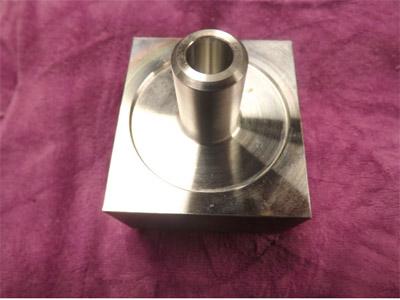
CT 499 from Chemtool Inc. is a uniquely formulated metalworking fluid that is based upon synthetic ester technologies that does not contain chlorine or sulfur. CT 499 is particularly well-suited for cut-off operations where fluid misting application/near dry lubricants are utilized. The superb lubrication properties of CT 499 allows for extended tool and cut-off saw life while depositing only a minimal residual film.
CT 499 is particularly effective as a saw lube for aluminum billets and extrusions for both cast and regular aluminum alloys as well as most nonferrous metals. CT 499 exhibits favorable physical properties (low odor, clear appearance and low misting properties) which quickly gains operator acceptance. CT 499 is also designed for use on copper, brass and all yellow metals.
CT 499 Benefits:
Outstanding lubrication based upon blend of synthetic esters
Contains no sulfur nor chlorine
Contains nonferrous corrosion inhibitor
Low odor and transparent appearance for worker acceptance
Low viscosity ideal for misting applications
High flash point Low smoking characteristics
Low V.O.C. value of only 0.4 grams per liter Low pour point ideal for varying use environments
Ideal for utilization on all nonferrous metals
Contact Details
Related Glossary Terms
- alloys
alloys
Substances having metallic properties and being composed of two or more chemical elements of which at least one is a metal.
- aluminum alloys
aluminum alloys
Aluminum containing specified quantities of alloying elements added to obtain the necessary mechanical and physical properties. Aluminum alloys are divided into two categories: wrought compositions and casting compositions. Some compositions may contain up to 10 alloying elements, but only one or two are the main alloying elements, such as copper, manganese, silicon, magnesium, zinc or tin.
- flash
flash
Thin web or film of metal on a casting that occurs at die partings and around air vents and movable cores. This excess metal is due to necessary working and operating clearances in a die. Flash also is the excess material squeezed out of the cavity as a compression mold closes or as pressure is applied to the cavity.
- metalworking
metalworking
Any manufacturing process in which metal is processed or machined such that the workpiece is given a new shape. Broadly defined, the term includes processes such as design and layout, heat-treating, material handling and inspection.
- sawing machine ( saw)
sawing machine ( saw)
Machine designed to use a serrated-tooth blade to cut metal or other material. Comes in a wide variety of styles but takes one of four basic forms: hacksaw (a simple, rugged machine that uses a reciprocating motion to part metal or other material); cold or circular saw (powers a circular blade that cuts structural materials); bandsaw (runs an endless band; the two basic types are cutoff and contour band machines, which cut intricate contours and shapes); and abrasive cutoff saw (similar in appearance to the cold saw, but uses an abrasive disc that rotates at high speeds rather than a blade with serrated teeth).

